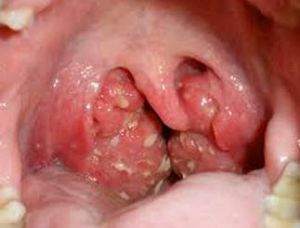 Leptotrichosis( pharyngicosis, pharyngoosis) is a disease caused by bacterial microorganisms Leptothrix buccalis( leptotrichia).
Leptotrichosis( pharyngicosis, pharyngoosis) is a disease caused by bacterial microorganisms Leptothrix buccalis( leptotrichia).
Filamentous bacteria are constantly present in the oral cavity( in the gingival pockets, folds of the mucosa, in the retromolar space) and are activated by some factors( concomitant fungal infections, galvanism, local immunodeficiency and candidiasis).
Leptotrichia have segmented ends and a thickening 0.2-0.4 μm in size. Based on medical research revealed that pharyngomycosis is often manifested in children.
The back of the tongue is often affected by bacteria, since leptotrichia test tropicity towards the lymphoid tissue, the process often manifests itself in the zone of the lingual and pharyngeal tonsils.
Contents
- Causes of the disease
- Classical symptomatology
- Diagnosis and treatment
- Prevention and consequences of the disease
Causes of the disease
Leptotrichosis can occur in people who have the following pathologies:
- AIDS;

- diabetes;
- malignant neoplasms;
- lack of vitamins C and B;
- systemic diseases of the digestive tract and blood;
- imbalance of the nervous vegetative system;
- candidiasis of the oral cavity;
- for the consumption of corticosteroids and antibiotics;
- for dystrophic changes in the epithelium of the oral cavity, hyperkeratosis and keratosis.
Most often the disease develops when the carbohydrate-protein metabolism and the balance of vitamins are disturbed. In children, leptotrichosis can occur with inappropriate oral hygiene.
Classical symptomatology
Pathology is manifested by massive whitish deposits on the tonsils and the root of the tongue. The back of the tongue also has whitish 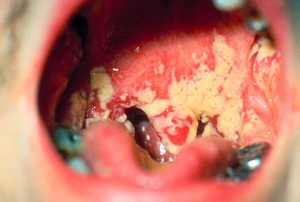 plaque, but the mucosa has a moderate moisture and normal color. Under the film, dense plaque-like neoplasms with small "tweezers" appear.
plaque, but the mucosa has a moderate moisture and normal color. Under the film, dense plaque-like neoplasms with small "tweezers" appear.
Patients complain of the presence of pain in the mucous membrane, burning tongue. As a result of severe pain, speech is difficult, the patient refuses to eat.
In the presence of spines, a person develops perspiration, a cough or a foreign body sensation in the pharynx.
Diagnosis and treatment
The diagnosis is based on the identification of a characteristic microscopic picture in the form of bacterial chains of leptotriks "dot-dash".
To confirm the diagnosis, culture and PCR are used.
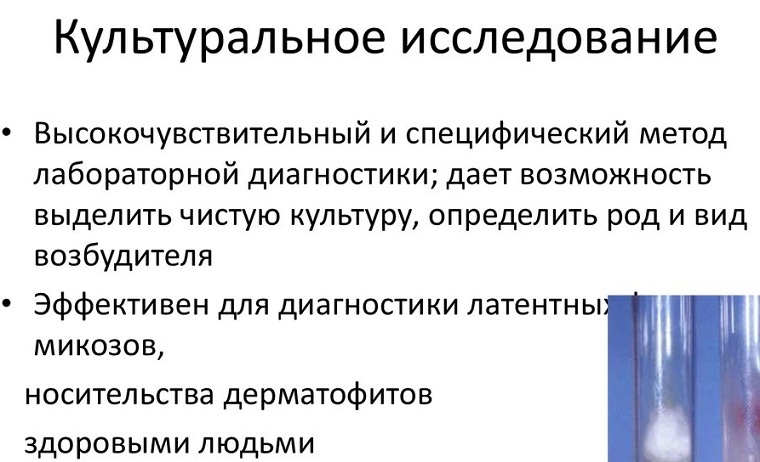
When diagnosed, the leptotriks in the smear look like this:
No single treatment protocol has been developed at the moment. When testing many of the agents, there is no definite effect. In some patients, the disease disappears on its own, but mainly pathology is persistent and requires intensive treatment.
Tonsillectomy is not justified, as there is no guarantee of full recovery, and tonsils without chronic inflammation are often removed. Low-efficiency is iodine lubrication, antiseptic rinsing, cauterization of plugs by galvanocauters.
Currently, treatment of pharyngicosis involves the use of the following techniques:
- Medication treatment .In typical situations, antibiotic treatment is used. Sensitivity of bacteria to
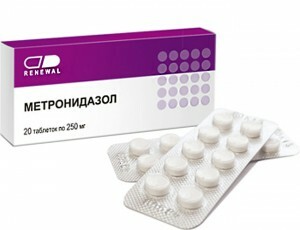 beta-lactam antibiotics, Metronidazole, Clindamycin, Levomycetin, Tetracycline is noted. Leptotrichia are resistant to aminoglycosides, fluoroquinologens and macrolides. The best effect is the washing of lacunae with a 0.1% aqueous solution of Chinozol a couple of times a week, only 8-10 times, with 1-2% solution of Decaris for 3-4 months. Treatment with Decamine, Leborin and Nystatin is not effective.
beta-lactam antibiotics, Metronidazole, Clindamycin, Levomycetin, Tetracycline is noted. Leptotrichia are resistant to aminoglycosides, fluoroquinologens and macrolides. The best effect is the washing of lacunae with a 0.1% aqueous solution of Chinozol a couple of times a week, only 8-10 times, with 1-2% solution of Decaris for 3-4 months. Treatment with Decamine, Leborin and Nystatin is not effective. - Cryotherapy .Treatment of leptotrichosis is carried out by cryoexposure with sequential local freezing of the damaged zones of palatine tonsils under local anesthesia.
- Physiotherapy .Physiotherapeutic methods include lasers, UFO.Such therapy is effective when the rays are directly delivered to damaged areas. In unirradiated areas, plaques are preserved. Treatment is carried out in conjunction with vitamin therapy( preparations of group K, C and B) and hyposensitization.
- Comprehensive treatment of .The specialists developed a certain technique aimed at the appearance of new foci. It is prescribed to wash the tonsils and rinse the throat with antiseptics( quinazole).Simultaneously, predisposing factors( phenomena of antibiotic therapy, dysbacteriosis, exacerbation of chronic gastrointestinal diseases and vitamin deficiency) are eliminated. With such therapy, new foci do not appear, the available foci gradually disappear. After 3-4 months, the patient recovers.
Traditional methods of treatment of laryngomycosis:
- Garlic .This remedy destroys various kinds of bacteria. It is used in several ways: several times a day, chew a clove of garlic, washing it with milk. To remove the infection, you can drink garlic tincture of 100 grams of chopped garlic, infused into 0.5 liters of vodka. The composition should be taken in the morning and evening for a teaspoon of 30 days.
- Icelandic moss .A tablespoon of the plant is brewed with a glass of boiling water. After half an hour infusion can take 2 tablespoons 3 times a day on an empty stomach or rinsing the mouth. You can also make a mixture of 2 tbsp.spoons of honey, a glass of kefir, a teaspoon of Icelandic moss and ginger root in the morning on an empty stomach.
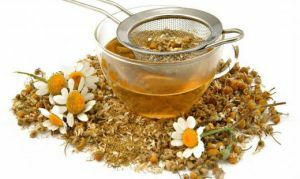
- Propolis .To eliminate the microbes, 3 times a day, take a teaspoon of an alcohol solution of propolis, diluting it in water. Propolis oil is also suitable, which dissolves several times a day.
- Canadian yellowstone .Dessert spoon of the plant to cook in 300 ml of water for 5-7 minutes, cool, divide into 3 parts and drink for a day. Duration of treatment is 3-4 weeks.
- Cleaner .Make infusions from the plant. For this, a tablespoon is brewed with 300 ml of boiling water and infused for 1 hour. Take the composition of 2 tablespoons.spoons three times a day.
- Gum .Take it in small doses( 1/3 teaspoon) 1 time per day dissolving in the mouth.
- Essential oils ( lemon, lavender, juniper, ylang-ylang, fir and ethereal).10 drops of oil dissolve in a glass of water and rinse the mouth.
- Mumiye .It is advisable to take the mummy in solution or capsules.
Prevention and consequences of the disease
The prevention of pharyngitis is attributed to the elimination of disease provokers. That is, remove the conditions that may cause fungal infection.
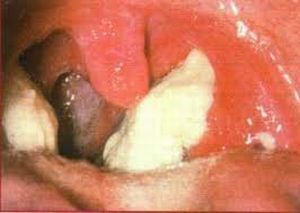 If necessary, adjust the glycemic profile( blood sugar level), stop taking antibiotics, prescribe medications and correct the regimen of the day. An important role in pharyngomycosis has measures to strengthen immunity, intake of vitamin complexes, proper diet, walking outdoors, normal sleep.
If necessary, adjust the glycemic profile( blood sugar level), stop taking antibiotics, prescribe medications and correct the regimen of the day. An important role in pharyngomycosis has measures to strengthen immunity, intake of vitamin complexes, proper diet, walking outdoors, normal sleep.
Leptotriks is dangerous during pregnancy, because of a lesion, miscarriage, infection of the fetus, amniotic fluid, or premature birth may occur. Therefore, before planning a child, you should be tested for infection and, if necessary, be treated.
Timely appeal to a specialist and properly selected treatment provide a favorable prognosis for recovery. If the disease has passed into a chronic form, then the prognosis will be less favorable.
